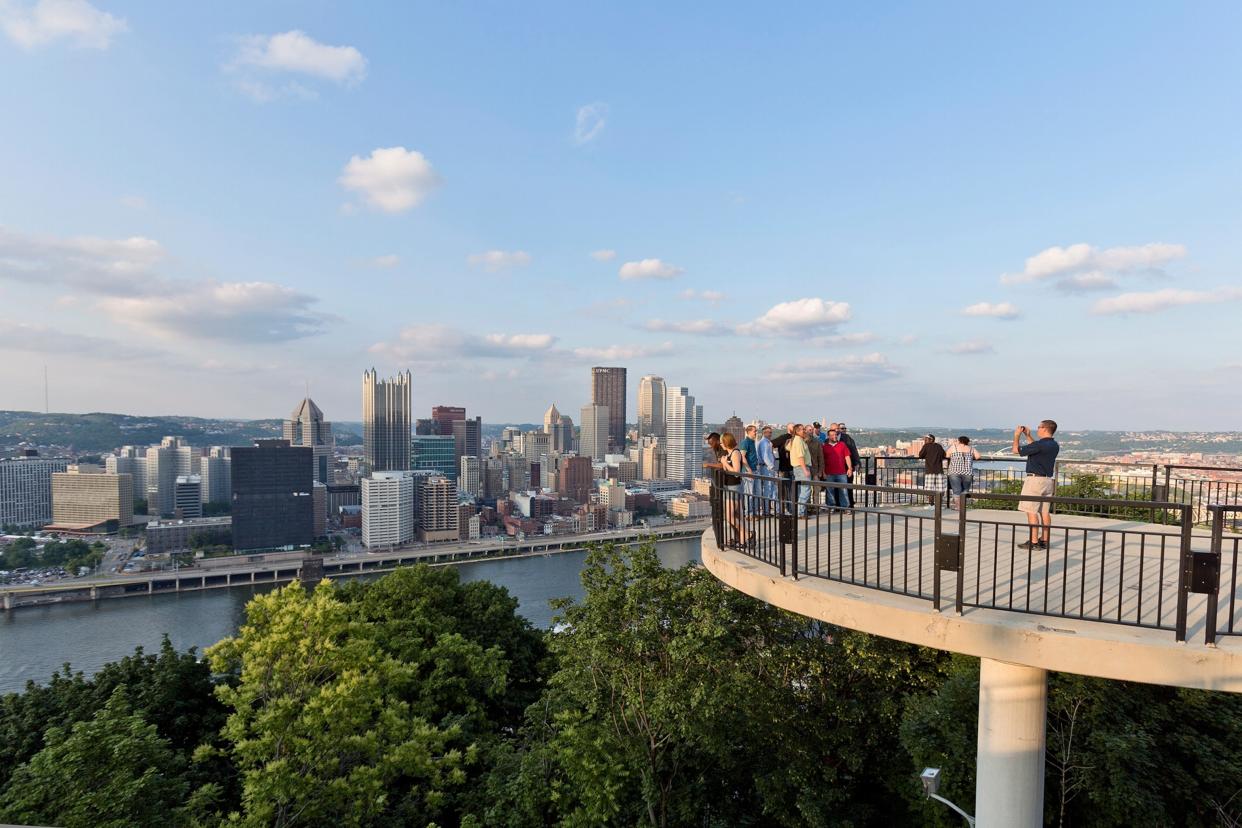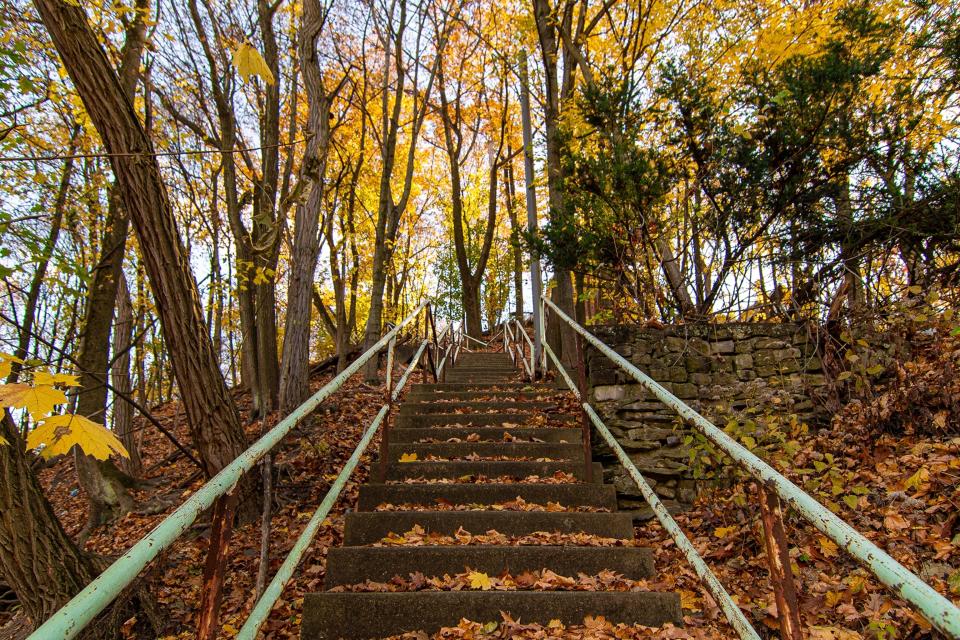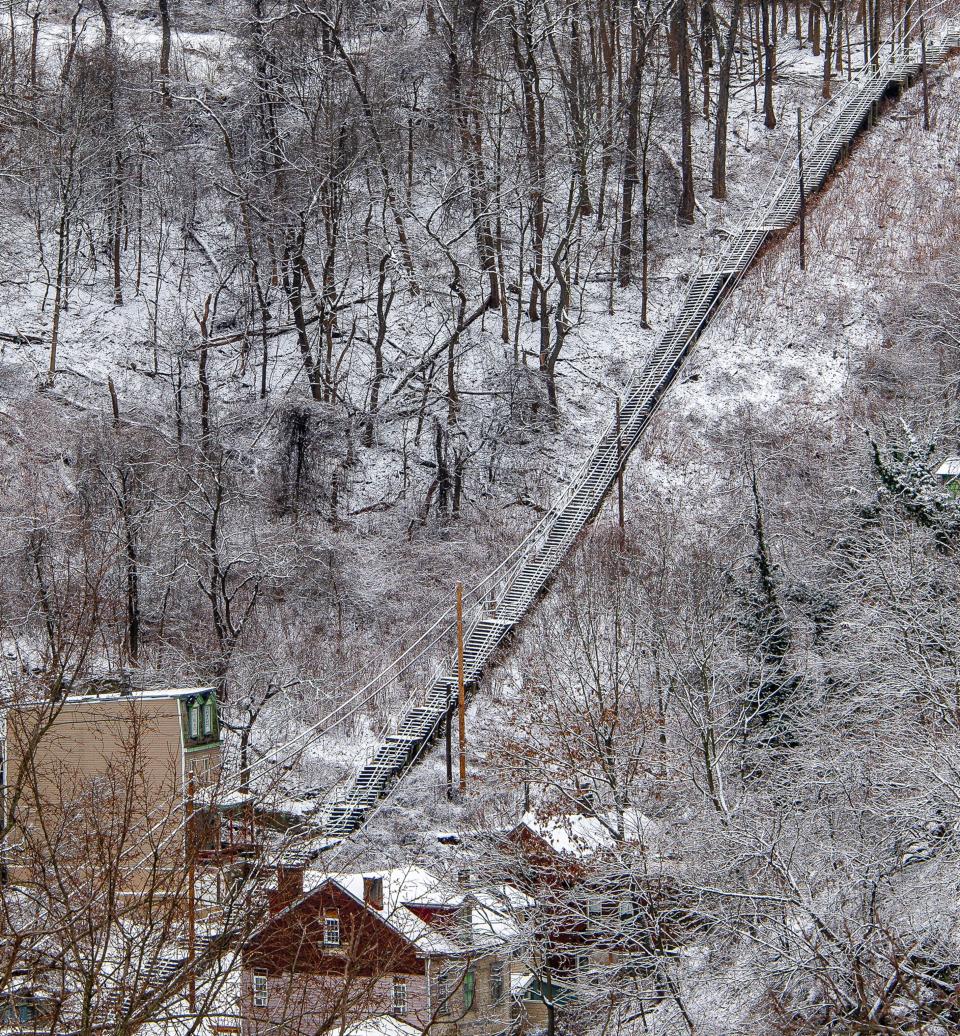Pittsburgh has 700 staircases that offer the perfect view for urban hikers

As more urban hikers take to trails such as the new Underline in Miami and Buffalo Bayou Greenway Connector in Houston, they are rediscovering Pittsburgh’s unique kind of city challenge. Over 700 staircases climb the town’s steep, surrounding hills, plunging through dense residential neighborhoods and leafy thickets. From “the steps,” as locals refer to them, you can experience sweeping vistas of downtown Pittsburgh that might make you think you’re standing atop one of the peaks in the nearby Allegheny Mountains.
History of Pittsburgh’s steps
From the early 1900s through the 1970s, Pittsburgh was one of America’s leading steel manufacturing towns, producing over 20 million tons of steel annually by the early 20th century. The hills of western Pennsylvania were rich with iron ore—the key raw ingredient for steel—but setting up shop within these hills resulted in Pittsburgh building some of the steepest and most lung-busting streets in America.
For the thousands of steel workers living up on the hills that surround the city center, “commuting” to the factories downtown was a grueling ordeal. In addition to constructing a series of mechanical funiculars that connected the hilltops to downtown, the city built long stairways to help Pittsburghers get to work and back up again without injuring their calf muscles. While you couldn’t call climbing these stairways “easy,” the flat steps were a slightly less arduous alternative to the relentlessly angular grade of Pittsburgh’s steep streets.

Altogether, more than 700 public stairways were created, making Pittsburgh the most step-rich city in the U.S., with a cumulative estimated height of roughly 24,000 feet—only 5,000 feet shy of the Mount Everest summit.
When the steel industry collapsed in the mid-’80s, Pittsburgh lost much of its population (and tax base). The rise of the automobile had already prompted many Pittsburghers to abandon the stairways as their primary means of commuting to work. And as the city kept losing residents and revenue, it stopped maintaining the steps, leading to many falling into disrepair—posing a “stay or go” question for some residents whose homes were only accessible by stairway.
But in 2015, Bob Regan, a geographic systems professor, published Pittsburgh Steps: The Story of the City’s Public Stairways, a historic guidebook that brought hundreds of the forgotten stairways back into focus for the wider public, decades after the city had stopped managing the steps and even keeping records of them.
Regan, who biked hundreds of miles around the city to track down and chronicle the lost steps, also handed over his mapping data to the city government, which used it to produce a public interactive map of all the accessible stairways around town. This summer, local stair enthusiasts Laura Zurowski, Charles Succop, and Matthew Jacob joined forces to publish City Steps of Pittsburgh: A History & Guide, a sequel which includes original photos of the steps and several suggested walking routes that include some of the most interesting stairways and striking city vistas.
(Walk across the sky in the U.S.’s highest-elevation city.)
Four ways to experience the Pittsburgh steps
Of all the Pittsburgh neighborhoods, South Side Slopes is home to the greatest concentration of steps. Once each year, the South Side Slopes Neighborhood Association draws hundreds of urban hikers for StepTrek, a community adventure in which city residents and visitors are given maps and invited to walk two curated, trail-blazed routes up and down South Side Slopes stairways that offer some of the finest Pittsburgh vistas and scenic curiosities. A local tradition for 23 years, this angular urban hike doubles as a fundraiser for the association’s neighborhood projects, which have included mosaic tile artwork on a set of steps at Oakley Street.
“We also use part of the money for step cleanups and preservation projects,” says board member Jami Szalla. “As awesome and fun as StepTrek is, the steps are also part of our everyday lives.There are houses here that can only be reached via public steps.”
For first-time Pittsburgh hikers, Zurowski points to Yard Way—one of the longest flights of stairs in the city, which offers direct access to the rustling greenery of Winters Park and a panoramic view of the Monongahela River, the high-rises downtown, and the city’s northern hills.

Another stunner is the Saint Michael’s Street steps. Those who descend this stairway will be surprised by the sight of an enormous green church steeple towering above South Side Slopes’s houses and woodlands, with the river serving as a backdrop. “Because you’re so high up when you’re walking around the South Side Slopes, you’ll often turn around and be like, ‘Whoa! Cool view!’” Zurowski says, adding that some of the best unexpected vistas that she’s stumbled upon during her step adventures have been glimpsed through the alleyways between houses or the gaps between trees.
(Explore some of America’s secret urban walks.)
But some Pittsburgh step traverses are more about the challenge than the views, and one of the most grueling examples is Rising Main. Located in the Fineview neighborhood, on the city’s northwestern side, Rising Main has around 370 steps, by which hikers gain over 300 vertical feet of elevation in just two-tenths of a mile. Upon reaching the top of the stairs, you can stagger down Lanark Street to enjoy a sweeping city overlook at Fineview Fields—savoring the sunlight and the breeze, just like a mountaineer.
Miles Howard is an author and writer covering outdoor recreation, and the founder of Boston’s Walking City Trail. He also publishes Mind The Moss, a weekly newsletter about unusual hiking in New England.

